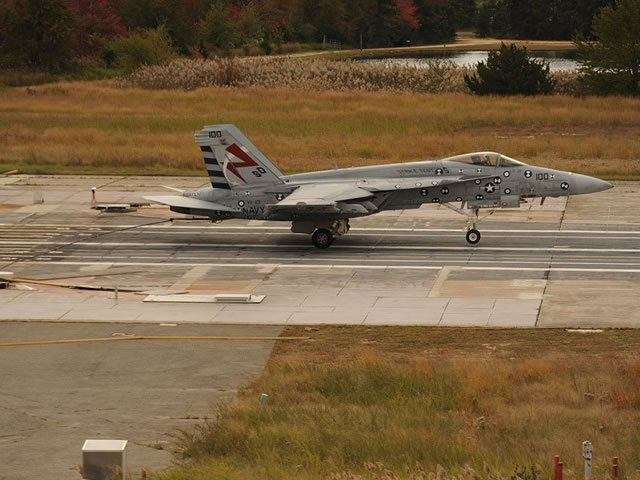|
|
|||
|
Video interview on EMALS and AAG during SNA 2017
|
|||
|
|
|||
|
“It has been a difficult challenge, but getting the system into test to verify its readiness to meet Navy requirements has been the team’s focus this past year,” said Rear Adm. Mike Moran, Program Executive Officer for Tactical Aircraft Programs (PEO(T)), who oversees PMA-251 program office. “The government and contractor team made the necessary hardware changes and implemented a build-test-fix software methodology that has incrementally improved the performance of the system, which will be ready to trap the first F/A-18 Super Hornet on Ford later this year.
“There is much left to be done to qualify the entire air wing for deployed operations, but this team is on the right track and focused on delivering the performance the Navy requires,” Moran added. AAG has been the focus of much scrutiny in recent years, after encountering delays in developmental testing and subsequent redesign efforts of the water twister, one of the system’s major components. With the upgraded hardware in place, the program has forged forward with an extensive land-based test program. As of December 2016, more than 1,400 dead-load arrestments and 351 test arrestments of the Super Hornet, the first aircraft type/model/series to undergo test on the system, have been completed. Simultaneously, the system is undergoing commissioning testing aboard CVN 78. “There is still a lot of work ahead, but we have the right team in place to get AAG and all of the benefits that come with it delivered to support the warfighters of today and the future,” said Tedford. Upon completion of AAG performance testing with the Super Hornet, the team began generating the first Aircraft Recovery Bulletin (ARB) to support pending Aircraft Compatibility Testing on board CVN 78, where a number of aircraft launch and recovery equipment systems, including the Electromagnetic Aircraft Launch System (EMALS), will be used. The AAG team continues multisite test operations with the next type/model/series, the E-2/C-2 platform, and PMA-251 proceeds with the necessary acquisition activities to ready the system for installation aboard CVN 79 and the future USS Enterprise (CVN 80). |
|||
AAG Remains US Navy’s Choice for Ford-class Aircraft Carrier Next-Gen Recovery System
- Posted On











